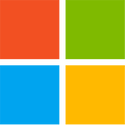Pimax Announces the World's Smallest Full-Feature 8K Resolution VR Headset
Pimax, a manufacturer of leading VR hardware, released in an online keynote presentation the design and specs of an upcoming headset, the Pimax Dream Air. The small and light headset packs 27 million pixels, head, hand and eye-tracking, integrated spatial audio, a DisplayPort connection, and a self-adjusting backstrap.
The Dream Air is a PCVR headset, and borrows a lot of components from the previously announced Crystal Super, including the micro-OLED panels and pancake lenses—but packs this into a small form factor headset, to satisfy different use cases. It breaks with previous Pimax headsets, with a new design language, signalling the small form factor era for Pimax.
The Dream Air is a PCVR headset, and borrows a lot of components from the previously announced Crystal Super, including the micro-OLED panels and pancake lenses—but packs this into a small form factor headset, to satisfy different use cases. It breaks with previous Pimax headsets, with a new design language, signalling the small form factor era for Pimax.











